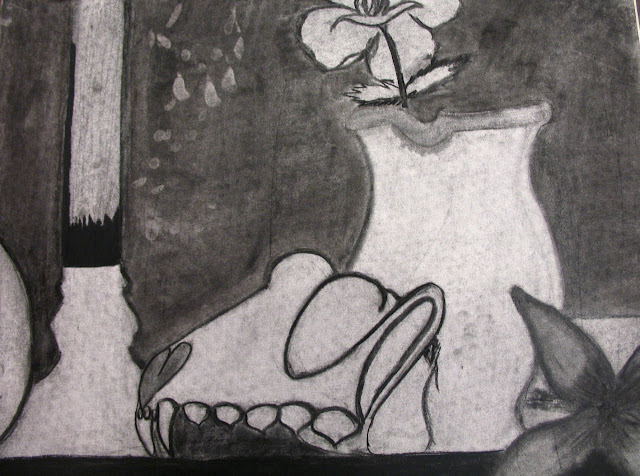Students also learned the traditional chiaroscuro technique where you tone your paper to create a middle value and then add darks and lights from there. In the case of using charcoal, we erased out all the highlights.
To Begin, students drew thumbnail sketches in their sketchbook, in order to find a good composition. To do this they used their prior knowledge from the small pencil compositions project. They looked through a viewfinder and drew 3 different compositions.
I had the students fill in the negative space shapes in their small compositions, so they would be able to see the structure of the drawing a bit better.
Next, my students selected the composition they felt was the strongest, toned their paper with vine charcoal, and enlarged the small composition onto large paper using a simple grid and observation.

They then took their time to create a contour line drawing of each object.
Students then observed the still life carefully in order to find the lighter values and use their eraser to pull them out. They then added darker values using both vine and compressed charcoal.


The final drawings are very beautiful, and in many of them you can see the struggle evident in the process of making this type of work. Students spent several days re-hashing and reflecting on their their process and experience. I will post about that next.



















































